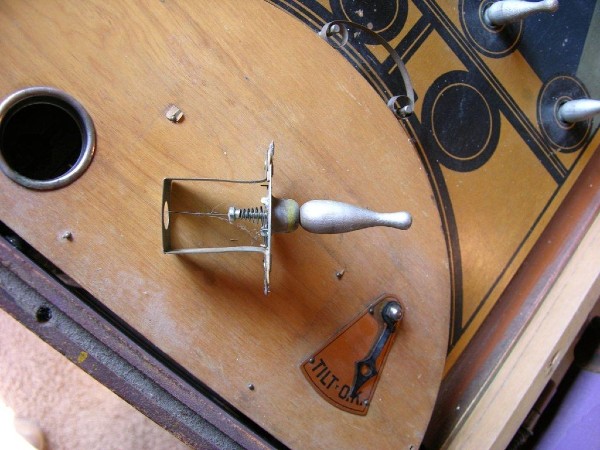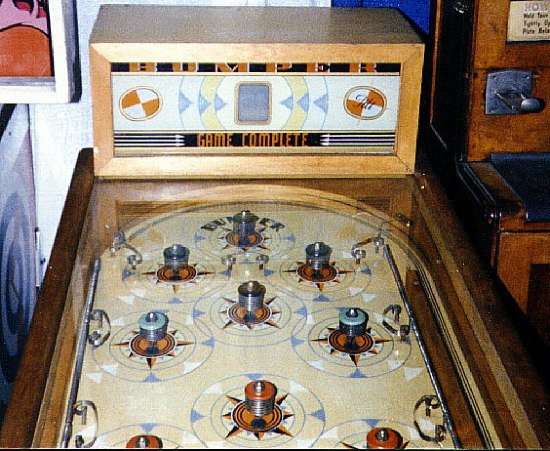There are many components of a pinball machine that are often taken for granted. From the plunger to the flippers, there are a lot of important moving parts on a pinball machine. One of the most asked about components of a pinball machine are the bumpers and how they work.
Pinball machine bumpers run on a solenoid that sits below the field, which pulls down a ring on the bumper to push the ball in a different direction. Once the ball is moved away from the bumper, the solenoid goes back to its original position ready to be activated again.
Below, we’ll go into more detail about how pinball bumpers work, and we’ll also discuss the different types of bumpers you will find on a pinball machine. We’ll also dive into the history of pinball bumpers as well.
How Does A Pinball Bumper Work?
When a ball enters a bumper’s circumference, it will roll onto a ring that will drop to the field. This lower ring activates the solenoid below causing magnets to be activated. Once the magnets are activated, they will pull a ring from above the ball to be pulled down onto it. This force makes the ball shoot out in a different direction.
Since the rings are bent in a circular formation, not every bumper will end up shooting the ball the same way. This allows for more of a random feel when the ball hits the bumper, and the unpredictability of where the ball will go adds to the excitement of playing on a pinball machine.
The 4 Types Of Pinball Bumpers
There are two main categories of bumpers, known as active and dead bumpers. Active bumpers are the ones explained in the previous section, where they will shoot the ball in another direction when activated. Passive and dead bumpers, often called mushroom or tower bumpers, are usually on the field to cause a disturbance in the ball’s movement. They usually don’t score you any points.
Active bumpers will show on them 10, 100, or 1,000 points when hit. Many of these bumpers are usually found in a group around each other. This will help your score as they will bounce back and forth hitting one another. To get a few extra hits, you might want to try shaking the machine to get some extra bumps. They’re often called pop, thunder, jet, percussion, or power bumpers.
1. Disappearing Bumpers
Disappearing bumpers are bumpers that will lower to be flush with the playfield when hit. These are similar to your average drop down targets.
2. Jumper Bumpers
Jumper Bumpers refer to bumpers that will rise on the field when they are hit. These are similar to fly away targets where the target, once hit, will spin up and stay above field till game ends.
3. Spinning Bumpers
Spinning bumpers tend to give no points but do the same as dead bumpers in that they change the direction of the ball.
4. Slingshots
Similar parts are slingshots and stationary targets with the solenoid coils below. Slingshots will have contact points that swing a hammer when they’re hit. This is why when you see a ball hit a slingshot it will soar across the field very fast as they are more powerful than standard bumpers.
When Were Bumpers Added To Pinball Machines?
Bumpers were first added to pinball machines on a widespread basis in 1937 by The Bally Company. Before that, Pacent Novelty Manufacturing had a bumper system on their 1936 game “Bolo”. Early bumpers were usually dead bumpers, but machines produced since the 1960s primarily use active bumpers.
Just like flippers, bumpers were not always on pinball machines. Since most of these machines would be nudged to attempt to score ball in specific hole, New York company Pacent Novelty Manufacturing decided to add some fun with them on their Bolo game.

Bally was able to get a patent for their bumpers as they changed the design enough for it to be deemed original. These bumpers also look closer to the bumpers we know today instead of the Bolo bumpers.

But before bumpers were added onto the machine’s playfield there was an introduction of solenoids. These solenoid pops were introduced into the game “Contact”. When a ball entered a hole, the solenoid would pop the ball back out. This was introduced with an automatic progressive scoring system.
Before this, there were some machines that used electricity to ring bells, turn lights on and kick balls around. But the addition of bumpers and other solenoid devices would allow the game to run smoother since it would kick the ball out faster.
Final Thoughts
Pinball bumpers work using a solenoid mechanism located below the playfield. When a ball triggers this solenoid, it pulls a ring down on the bumper which pushes the ball off in a different direction. The solenoid then returns to its original position ready to be triggered again.
